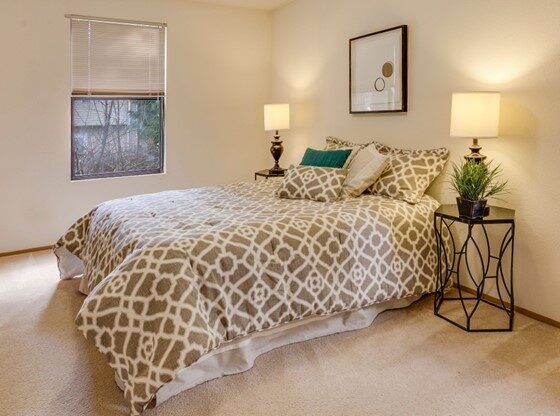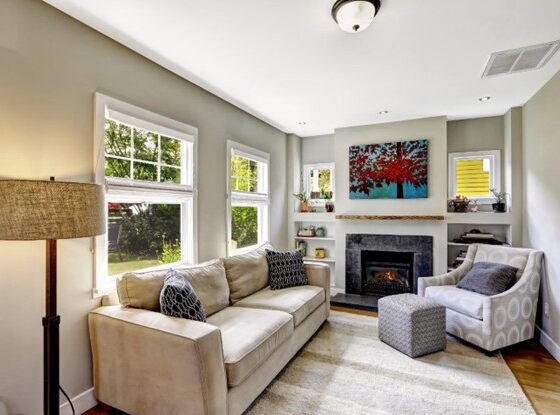Do you wish to maximize the space in your small dining room? Often, we prioritize our kitchen and living areas, leaving the dining room tucked away in a corner or as a mere passageway to other rooms.
Fortunately, there are numerous interior design tips to ensure your dining room receives the attention it deserves, creating an inviting, practical, and stylish space that can serve various purposes.
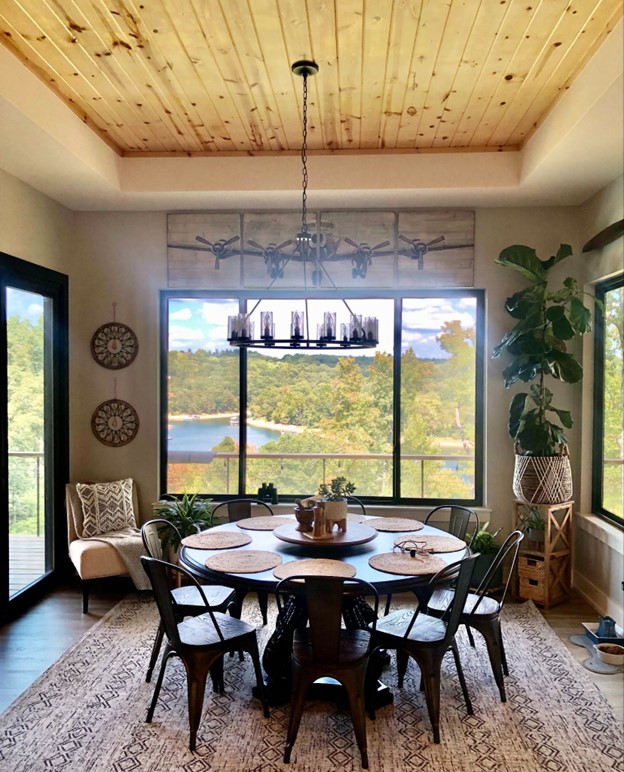
But before we read about the tips, why not discuss some basic mindset behind having a small dining room in average houses of big cities in the USA?
In general, the presence of a small dining room in homes can be influenced by various factors, including architectural designs, regional preferences, and the overall layout of residences. Here are some considerations regarding the prevalence of small dining rooms in homes, which may apply to regions like New York, Florida, and Texas:
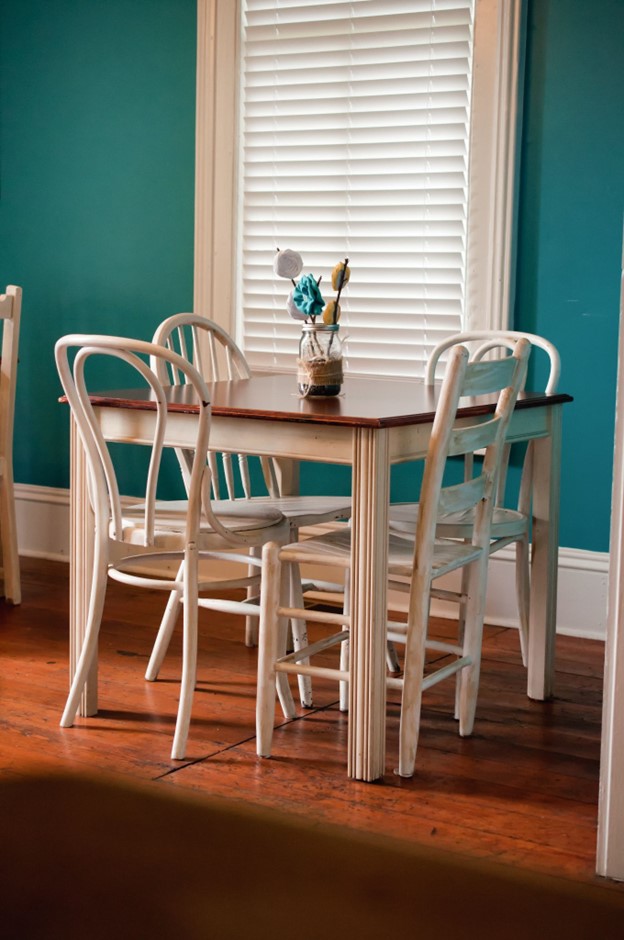
Architectural Styles:
The architectural style of homes can play a role in determining the size and layout of dining areas. In some architectural styles, such as modern or compact urban designs, there may be an inclination towards smaller dining spaces to optimize overall living space.
Urban vs. Suburban Living:
Urban areas, including parts of New York, may have a higher likelihood of homes with smaller dining areas due to limited space in densely populated cities. Suburban areas, as found in parts of Florida and Texas, might offer more spacious home designs with larger dining rooms.
Cultural and Regional Preferences:
Cultural and regional preferences can influence the importance placed on formal dining spaces. Some regions may prioritize larger, separate dining rooms for formal gatherings, while others may lean towards more open and multifunctional spaces.
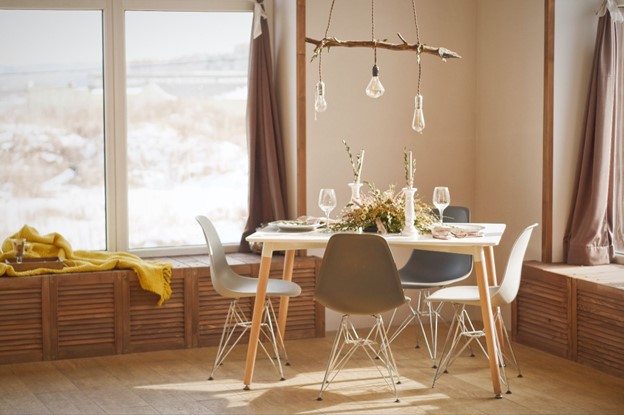
Housing Market Trends:
Housing market trends and the demand for certain features can impact the design of homes. In areas where there is a growing preference for open-concept living, dining areas may be integrated into larger communal spaces.
Home Size and Layout:
The overall size and layout of homes contribute to the presence and size of dining rooms. Smaller homes or apartments may have compact dining areas, while larger residences may offer dedicated dining rooms.
Functional Living Spaces:
The trend toward multifunctional and flexible living spaces can influence the design of dining areas. Homeowners may prefer adaptable spaces that can serve as both dining rooms and casual gathering areas.
Interior Design Preferences:
Interior design trends and preferences of homeowners play a crucial role. Some individuals may prioritize spacious, formal dining rooms, while others may opt for cozier, smaller dining spaces that align with contemporary lifestyles.
Cohesive Living Spaces:
In many modern home designs, the focus is on creating cohesive living spaces. This often involves integrating dining areas with kitchens and living rooms to foster a sense of openness and connectivity.
Did you know?
As per the U.S Census Bureau Study that took place after COVID-19, below are some interesting trends of people of the U.S.A. and their dining table habits.

Recent Family Dinner Statistics:
1. As of September 2022, 91% of parents noticed reduced stress when sharing family meals.
2. 84% of adults express a desire to share meals with loved ones more frequently.
3. In 2021, 65% of American parents received more meal prep help than before the COVID-19 pandemic.
4. Parents serving dinner by 6:15 p.m. in 2021 spent more time reading, playing, and having quality time with their children.
5. In 2022, 25% of Americans buy groceries online at least once a week, a significant increase from 2021 (20%) and 2020 (11%).

Importance of Family Dinners:
1. A 2022 study found that the frequency of family meals is associated with improved food consumption patterns for both parents and children.
2. In a September 2022 survey, 67% of people said sharing a meal reminds them of the importance of connecting with others.
3. A 2022 study revealed that a better family meal environment at age 6 predicts positive outcomes, including an earlier bedtime and reduced behavior problems at age 12, for both boys and girls.
4. 59% of respondents in a 2022 survey noted being more likely to make healthier food choices when eating with others but faced scheduling challenges.
5. The top benefits of family mealtime include stress reduction, connecting with others, and taking time to slow down.
These statistics highlight the positive impact of family dinners on stress reduction, emotional well-being, and healthier food choices.

How can we optimize a small dining space to the best of our efforts?
The key is to optimize the available space through thoughtful color choices, appropriate furniture selection, and strategic lighting ideas for the dining room. By incorporating these elements, you can transform your dining space into an area of pride, ready for various uses, including hosting dinner parties.
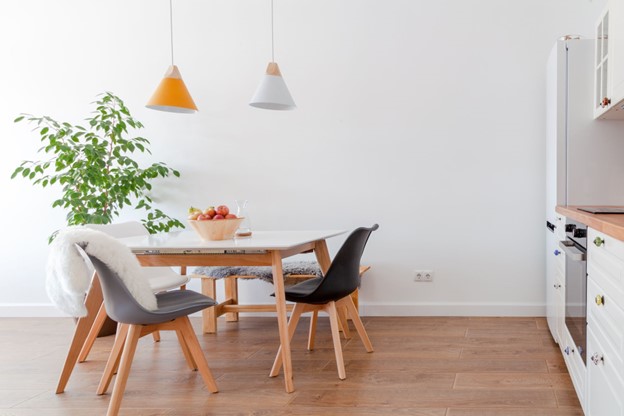
Color Choice and Perception
Color plays a pivotal role in altering the perception of a room’s size. While conventional wisdom often leans towards light colors for small dining rooms, utilizing dark colors with light accents can create the illusion of more space. Opting for dark colors on the walls can impart a sense of intimacy and coziness, adding depth and drama to the room. Shades like grey, brown, deep blues or greens are recommended. Balancing these darker tones with lighter accents through furniture, textiles, or accessories helps maintain a harmonious atmosphere.
Addressing Low Ceilings
For dining rooms with low ceilings, selecting light-colored furniture is essential. Additionally, opting for low storage solutions directs the eye downward, preventing the focus from being drawn up to the ceiling. Matching storage units to the table and chairs promotes cohesion, while a neutral color scheme for tableware, especially white, contributes to a clean and airy Scandinavian style. Incorporating a pendant light with a simple yet striking design, hung at a practical height, enhances the visual appeal and functionality of the space.
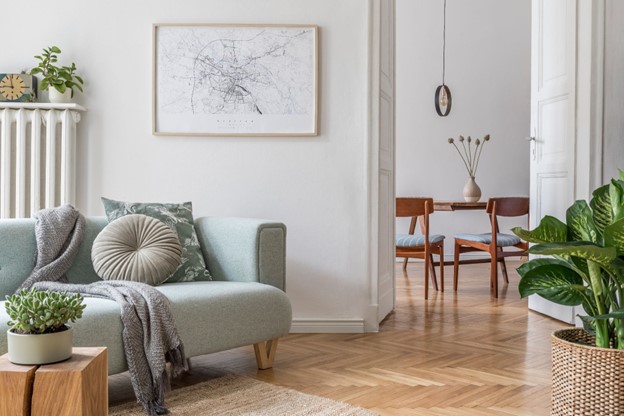
Adding Interest with Patterns
Introducing print and pattern into the dining room can create a harmonious feel. Coordinating fabrics, such as upholstered dining chairs with matching table runners and seat cushions, offer an elegant touch. Choosing designs within the same tonal palette ensures that they complement each other, contributing to a balanced and cohesive décor scheme.
Light and Airy Furniture Choices
In small, dark dining rooms, selecting light and airy furniture over dark and bulky options can instantly create a more spacious feel. Tables with tapered legs and thin tops, coupled with dining chairs that allow light to flow through the backs, contribute to the illusion of increased space. Choosing a narrow slat or wire design for chairs enables the eye to see through the furniture, while pale flooring reflects light upwards, complemented by pops of color through tableware, vases, and artwork.
Harnessing the Power of Metallic Wallpaper
Despite the misconception, small-patterned wallpaper ideas can work to your advantage in a limited space. Metallic wallpapers, with their subtle sheen, reflect and bounce light, creating a luminous atmosphere. Carefully selected wallpaper designs, such as those featuring small patterns or trailing elements, contribute to drawing the eye upward and elongating the perceived space.
The All-White Look for Instant Brightening
In confined spaces, white proves to be a transformative color, instantly brightening and lighting the room. Painting the floor white or installing white tiles adds to the overall effect. To prevent a clinical look, warm wood-toned tables and the addition of plants and fresh flowers for color and interest are recommended. The strategic use of black can provide a striking contrast without diminishing the benefits of the white color scheme.
Creating Contrast with Textures
Layering textures is a design trick that adds depth and warmth to a small dining room, making it more inviting. Combining different textures, such as pairing a dark wood dining table with lighter-colored upholstered chairs, contributes to visual interest and a lighter feel. Lighter-toned hardwood floors and rugs or carpets in pale shades enhance the sense of airiness. Maximizing natural light by using sheer curtains or blinds further contributes to an open and inviting atmosphere.
Embracing a Minimal Scheme
In a small dining room, opting for a more minimal scheme is beneficial, as clutter visually occupies space. A neutral, pared-back scheme using a light palette of natural tones can make the room feel more spacious. Simple furniture, incorporating natural elements like wood and stone, and minimalist décor contribute to a fuss-free and Nordic-inspired look.

Leveraging Personalized Bench Seating for Corners
Utilizing corners by incorporating or building bespoke bench seating that doubles as storage transforms otherwise dead spaces into practical and cozy dining areas. Benches provide an informal feel and can be paired with chairs or stools on the other side to accommodate more people. This approach not only optimizes space but also offers additional storage for keeping dining essentials neat and tidy.
Sticking to a Neutral Scheme for Characterful Spaces
Farmhouse-style dining rooms with characterful details can benefit from a neutral color scheme. Choosing soft grey tones for walls and other elements maintains cohesion and allows the room’s character to shine. Opting for a lead color or texture and sticking with it throughout the space fosters a sense of harmony.

Distracting the Eye with a Dramatic Mural
Murals can add drama to any space, particularly those with spatial limitations. Choosing a muted-toned design balances well with wooden tables and seating, distracting the eye and creating a visually interesting focal point. Selecting key colors from the mural for accessories ties the scheme together.
Making the Dining Room Look Taller
To overcome the challenges of low ceilings in a small dining room, drawing the eye upward becomes crucial. Installing statement lighting, such as pendants or cluster chandeliers with glass designs, not only adds visual interest but also creates an illusion of height. Avoiding tall and bulky furniture ensures that the table remains the focal point and appears comparatively taller.

Choosing the Right Dining Table Shape for Small Spaces
Selecting an appropriate dining table size is key, allowing enough space for movement around the table. There is flexibility in choosing shapes, with rectangular and square designs fitting into corners, oval tables adapting well to narrow spaces, and round tables offering versatility and a social aspect for guests.

If we recapitulate all the above, maximizing a small dining room involves a thoughtful combination of color choices, furniture selection, and design strategies. From creating illusions of space with color to utilizing versatile furniture and enhancing natural light, these tips can transform a compact dining area into a visually appealing and functional space for various purposes. Related to dining, if you want to know how to maximize the space in your small kitchen and arrange items in your small pantry, stay tuned with us!

